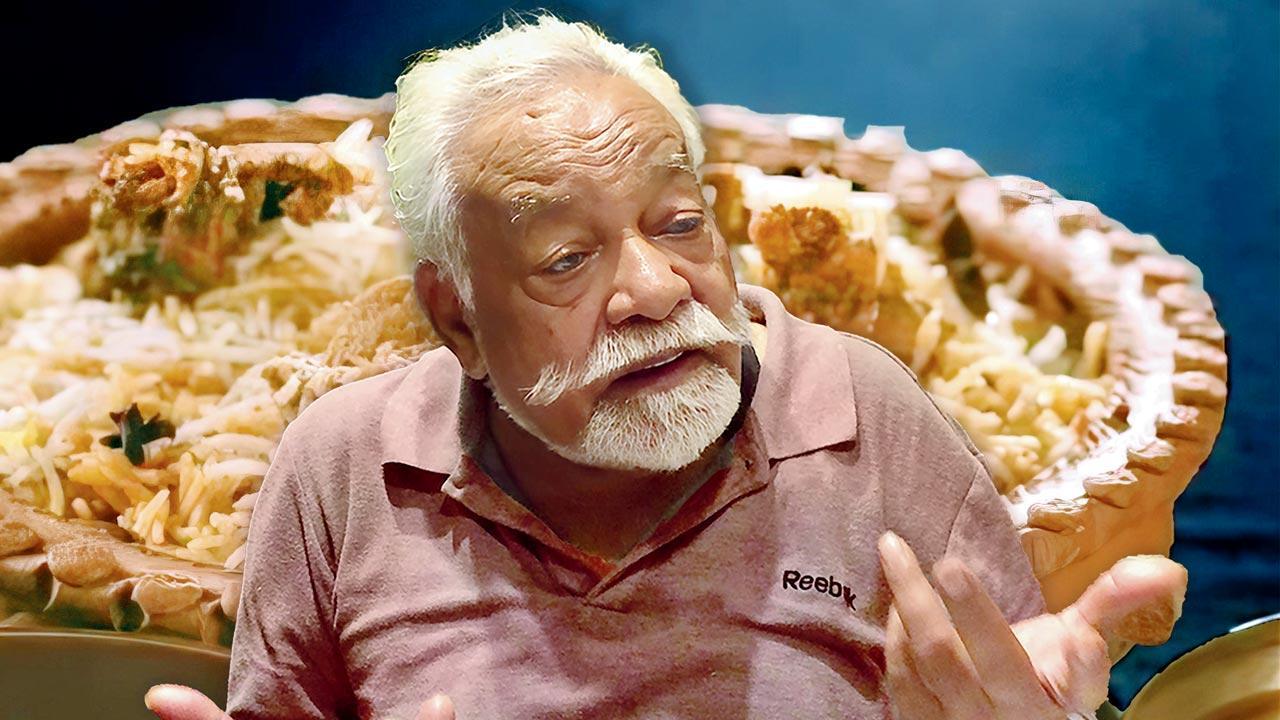The corporation promoted the chef’s lack of schooling as though it made his genius special. But he was larger than them and larger than life. The man without a signature left India with a signature cuisine

Imtiaz Qureshi was an effortless star in and out of the kitchen, utterly comfortable in his skin, and a charming teller of stories. Photo by C Y Gopinath
 The first time I encountered Imtiaz Qureshi, I didn’t encounter him at all.
The first time I encountered Imtiaz Qureshi, I didn’t encounter him at all.
ADVERTISEMENT
All I saw was his name, part of a sidebar in the menu of Dum Pukht, the restaurant he had helped start for the ITC Maurya Sheraton in Delhi. It’s worth describing that moment in some detail.
It was 1990, and everyone in Delhi was talking about something entirely new called dum phukt food. The reviews were ecstatic. It was a matter of time before curiosity got the better of me.
I was shown to my seat and given the menu, which I remember as being unwieldy. On the inside cover was a prominent bordered box containing a single thumbprint. The smug text told me this was how Imtiaz Qureshi, the Master Chef of Dum Phukt, confirmed his identity on documents, having never been to school and being technically illiterate. The chef had no signature.
I felt a flush of indignation that anyone would celebrate illiteracy, as though it were an extra reason to appreciate the masterpieces that I would soon be served. Was Imtiaz Qureshi a culinary magician because he had never attended catering school? Were we to gasp with disbelief that this man, who could not speak a word of English, could conjure up food that had already made kings and prime ministers swoon?
I did not meet the man with no signature that evening, but I was introduced to the unforgettably delicate, subtle fragrances and tastes of a cuisine I had never met before. The Avadhi dishes I ate that evening are now part of the Indian vocabulary of fine dining, but in those early days, I was one of very few who had tasted the authentic dum phukt biriyani and eaten the meltingly transcendent kakori kebab.
The corporation that thought it had found an unlettered genius in the dust of a Lucknow street could not have known that Imtiaz Qureshi was larger than life and definitely larger than the company that had hired him.
In 2016, the Indian government awarded him the Padma Shree in recognition of his overwhelming contributions to India’s culinary heritage. The corporation didn’t celebrate. There are no superstars in companies, only teams.
Among the firsts he is not widely known for, he pioneered the practice of separating meats in the kitchen in deference to religious and cultural sensitivities. Pork, beef, chicken, and fish were stored and processed in their own areas.
Chefs were faceless before then, but Qureshi not only enjoyed meeting new people but he was frequently inspired by them. Under his regime, it became acceptable for diners to meet the men behind the meals.
Trained from childhood to cook vast quantities of biriyani in giant vats to feed weddings and conventions, Imtiaz Qureshi invented a way to create the same dum biriyani in an earthen pot for a family of four at a table.
The Avadhi dum phukt cuisine became the signature contribution of the man without a signature.
He was an effortless star in and out of the kitchen, utterly comfortable in his skin, and a charming teller of stories, each time spiced a little differently, like his many inventive dishes.
When he passed away, aged 93, on February 16 this year, one of the many tributes in his honour was by Rashmi Uday Singh, doyenne of food journalism in India. The touching ceremony, attended by Qureshi’s many admirers and friends, was held at Ishaara, a restaurant whose staff can communicate only wordlessly, in sign language. There were tearful, heartfelt tributes.
No one from ITC was there.
The second time I met Imtiaz Qureshi was in 2018 in the Bandra outlet of Kakori House, the kebab restaurant run by his eldest son, Ishtiyaque. He was 87, having retired a few years earlier, and lived not far from his son in an apartment designed around a fully equipped modern kitchen where he could experiment, play, and entertain to his heart’s content. He still had six years of life in him.
Had his handlebar been a little more pointy and a little less bushy, he might have reminded you of the iconic Air India Maharaja. He is a short, barrel-chested man, with a robust laugh. He needs little provocation to start storytelling, least of which will be how one day long ago in the 1960s, he cooked a vegetarian dinner for Jawaharlal Nehru, Indira Gandhi, Lal Bahadur Shastri and Zakir Husain at UP Chief Minister C. B. Gupta’s home. Everyone thought they were eating meat. Till he told them with a twinkle, no one realised that he had created meat and fish lookalikes using vegetables like jackfruits, bottle gourds and eggplants.
Ramadan will be different for the Qureshis this year. Their exuberant, flamboyant and ingenious father will not be there, creating a storm in the kitchen every evening.
His last meal in the hospital had been personally supervised by Avisek Datta, Lilavati Hospital’s executive chef, and a disciple of the great Qureshi. It was prepared with affection and care, everything one would serve a wizard who had lived and cooked without boundaries all his life.
“He ate well until he died,” says Ishtiyaque.
You can reach C Y Gopinath at cygopi@gmail.com
Send your feedback to mailbag@mid-day.com
The views expressed in this column are the individual’s and don’t represent those of the paper
 Subscribe today by clicking the link and stay updated with the latest news!" Click here!
Subscribe today by clicking the link and stay updated with the latest news!" Click here!












